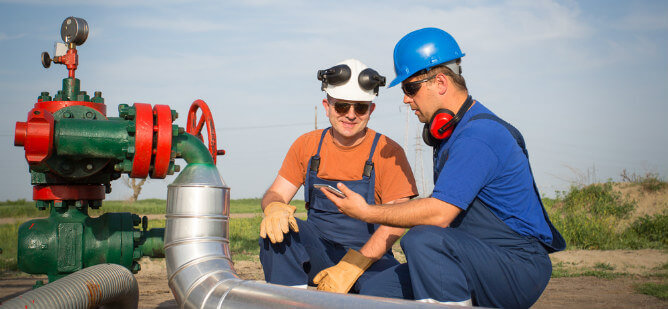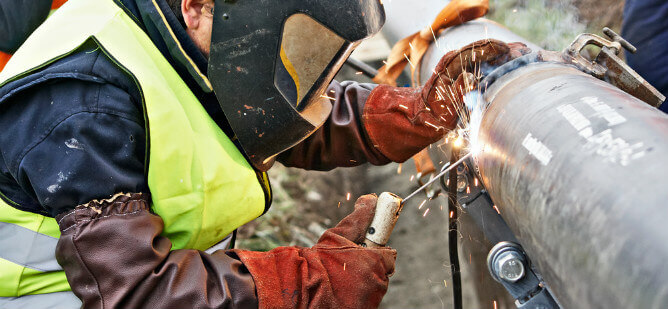
8 Critical Pipeline Safety Precautions to Consider
There are always risks involved when working with high-pressure equipment such as pipelines. Some risks involved with pipeline handling include suspended loads and hazardous terrains as well as the ubiquitous human error factor in operations.
It’s essential for all personnel to understand the required safety procedures to ensure proper and safe handling of equipment. These procedures will help to minimize hazards and consequently, the rates of accidents on site.
8 Important Pipeline Safety Topics
Below are some critical safety precautions for working on pipelines.
1. Carry Out Frequent Safety Training
To raise awareness about on-site safety and reinforce learning in employees, employers should schedule safety training frequently. During training, employees, supervisors, and managers should all participate. Bolstered learning is an effective way to create a consistent mindset in everyone.
All training carried out in the U.S. must comply with national standards and industry best practices from recognized associations. For example, the American Gas Association provides pipeline safety guidelines for enhancing pipeline safety in the natural gas industry.
2. Foster a Corporate Safety Culture
Safety is crucial at pipeline installations to prevent hazardous conditions that may cause harm to employees. Safety must come before the job, and not the other way around. Managers and supervisors have a responsibility to instill this consciousness in employees by showing the example, giving rewards, and applying consequences where necessary.
All employees working on the site should possess STOP WORK authority to enable them to halt a procedure they identify as unsafe.
3. Ensure Proper Pipeline Excavation Procedures
Proper pipeline excavation procedures must be followed judiciously to prevent hazardous conditions at the site. Excavators used should be serviced as at when due and operators adequately trained. Explosions or environmental contamination can occur when an excavator damages an underground pipeline. Therefore, all utilities buried underground must be identified and marked before commencing operations.
Operators can also call 181 to confirm when it is safe to begin excavation. Proper benching and sloping techniques are essential during excavation. OSHA specifies that employees working in trenches that are 5 feet deep or more (4 feet deep in some states) should use a Trench Protecting System.
4. Use Appropriate and Adequate PPE While Working Onsite

When working with heavy equipment like pipelines, employees must use appropriate and adequate personal protective equipment (PPE). Although PPE is widely considered to be the last line of defense against hazards, they can be the difference between a safe and an injured or dead employee. Some parts of the body PPE should cover include the face (eyes), hands, and feet.
Standard PPE for ensuring onsite safety includes safety goggles, hard hats, safety boots (with steel toes), and gloves. Every employee has a responsibility of managing their safety and that of others by using appropriate PPE to mitigate risks while working with pipelines. PPE can be especially important during pipeline cleaning services such as pipeline pigging or nitrogen purging in pipelines where both equipment and chemical dangers are present.
5. Ensure Adequate Training for Operators of Heavy-Duty Machinery
All workers operating heavy-duty machines such as excavators, forklifts, and trucks should be adequately trained and briefed on the correct job procedure and practices at the job site. Also, place Operations and Maintenance manuals (OMMs) of the types of machinery they work with within reach of employees at all times.
Workers who have adequate training with one kind of machine do not necessarily have the skill to use the other. Avoid interchanging roles between workers to prevent unsafe conditions due to incorrect operation.
6. Inspect all Tools Used Onsite
Regularly monitor and inspect tools used at the site such as hand and power tools for cracks, signs of aging, or wear and tear to ensure they are in safe working conditions. Repair or replace defective or broken-down tools immediately to prevent unsafe working conditions and harm to employees.
7. Use Proper Handling Techniques
While working with heavy equipment such as pipelines, always use the correct handling procedures. Operators must adhere to manufacturer recommendations for equipment handling and avoid overloading. Where necessary, use mechanical aids, e.g., when lifting heavy, suspended loads such as pipelines and fittings to prevent back injury. Before carrying out any activity, prepare a Job Hazard Analysis (JHA). This document will inform all employees of the risks involved in carrying out a specific task to enable them to stay safe at all times. OSHA has several safety standards for correct manual and machine-assisted lifting procedures.
8. Maintain Correct Pressure Testing Procedures
An essential safety precaution for working on pipelines is not to operate pipelines beyond their Maximum Operating Pressure (MOP) for extended periods. Carrying out pipeline pressure testing above a pipeline’s pressure rating can compromise its integrity. Always follow written test procedures specified by manufacturers to stay within safe limits.
Trust NiGen for Reliable Pipeline Services
Contact NiGen’s team of professionals for pipeline maintenance services such as pneumatic testing, purging, leak detection, and chemical cleaning. Additionally, we provide on-site nitrogen generators for on-demand and cost-effective supply of high-purity nitrogen for the oil and gas industry.
For more information about our services or to request a quote, please contact us online today or call us at 713.956.8022.
